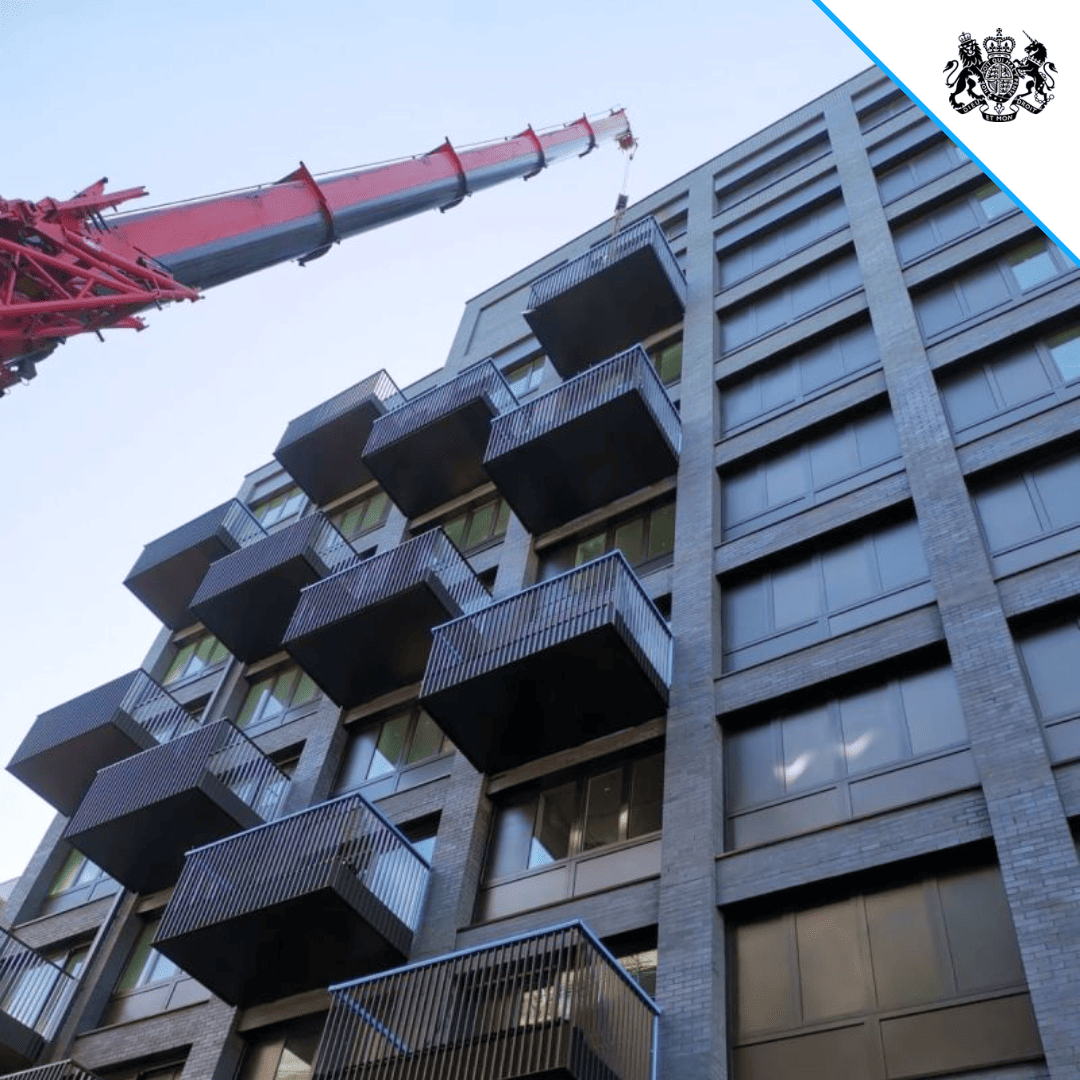Gateway 3: Ensuring Safety Before Occupation
This article delves into the intricacies of Gateway 3, its significance, requirements, and the steps that construction professionals need to undertake to successfully navigate this phase.
6/8

The sixth in a series of eight Building Safety Act insights by Blue Chyp.
Gateway 3: Ensuring Safety Before Occupation
This article delves into the intricacies of Gateway 3, its significance, requirements, and the steps that construction professionals need to undertake to successfully navigate this phase.
The Building Safety Act has introduced a structured approach to ensure the safety and compliance of high-rise residential buildings through various stages of their lifecycle. One of the critical phases in this lifecycle is Gateway 3, which occurs before the building is occupied. This gateway aims to ensure that the building is safe for residents by verifying that the construction work complies with the building regulations and the initial design approved during Gateway 2.
Understanding Gateway 3
Gateway 3 is the final checkpoint before the building is handed over to the occupants. It is a crucial phase where the Building Safety Regulator reviews the construction work to ensure it aligns with the approved plans and complies with the building regulations. This phase also involves the submission of a final safety case report and the handover of the golden thread of information to the Building Safety Manager, ensuring a smooth transition to the occupation phase.
The Significance of Gateway 3
The importance of Gateway 3 cannot be overstated as it serves multiple purposes:
- Verification of Compliance: It verifies that the construction work complies with the approved plans and building regulations, ensuring the safety and well-being of the occupants.
- Documentation of Changes: It documents any changes made during the construction phase, ensuring they are well-documented and justified.
- Handover of Information: It facilitates the handover of the golden thread of information to the Building Safety Manager, ensuring that all necessary information is available for the safe management of the building during the occupation phase.
Key Requirements of Gateway 3
Navigating Gateway 3 requires a thorough understanding of its requirements:
- Final Safety Case Report: A comprehensive report detailing the safety measures implemented during the construction phase, any changes made to the initial design, and the current safety status of the building.
- Golden Thread of Information: A digital record of the building, including design, construction, and safety information, which should be handed over to the Building Safety Manager.
- Declaration of Compliance: A declaration that the construction work complies with the approved plans and building regulations.
- Occupation Certificate: Obtaining an occupation certificate from the Building Safety Regulator, which is a prerequisite for occupying the building.
Steps to Successfully Navigate Gateway 3
The following steps provide a roadmap for construction professionals to successfully navigate Gateway 3:
- Collaborative Review: Engage with all stakeholders, including designers, contractors, and the Building Safety Manager, to review the construction work and ensure it aligns with the approved plans.
- Documentation: Document any changes made during the construction phase, ensuring they are well-justified and comply with the building regulations.
- Preparation of the Final Safety Case Report: Prepare a comprehensive final safety case report, detailing the safety measures implemented and the current safety status of the building.
- Handover of the Golden Thread of Information: Ensure that the golden thread of information is complete and up-to-date and facilitate its handover to the Building Safety Manager.
- Engagement with the Building Safety Regulator: Engage with the Building Safety Regulator, submit the required documents, and obtain the occupation certificate.
Implications for the Construction Industry
The introduction of Gateway 3 has several implications for the construction industry:
- Elevated Safety Standards: It reinforces the importance of safety, ensuring that buildings are safe for occupation.
- Accountability: It holds construction professionals accountable, ensuring that the construction work complies with the approved plans and building regulations.
- Transparency: It fosters transparency, ensuring that all stakeholders, including residents, are well-informed about the building’s safety features.
- Efficiency in Handover: By ensuring that all necessary information is handed over to the Building Safety Manager, it facilitates a smooth transition to the occupation phase.
Conclusion
Gateway 3 is a critical phase in the lifecycle of high-rise residential buildings, ensuring that they are safe for occupation. It reinforces the importance of compliance with building regulations and the approved plans, holding construction professionals accountable for the safety of the building.
By understanding and successfully navigating Gateway 3, construction professionals not only comply with the regulatory requirements but also contribute to building a safer and more accountable construction industry.
Through meticulous preparation and engagement with all stakeholders, construction professionals can ensure a smooth transition to the occupation phase, paving the way for the safe and compliant occupation of the building.




